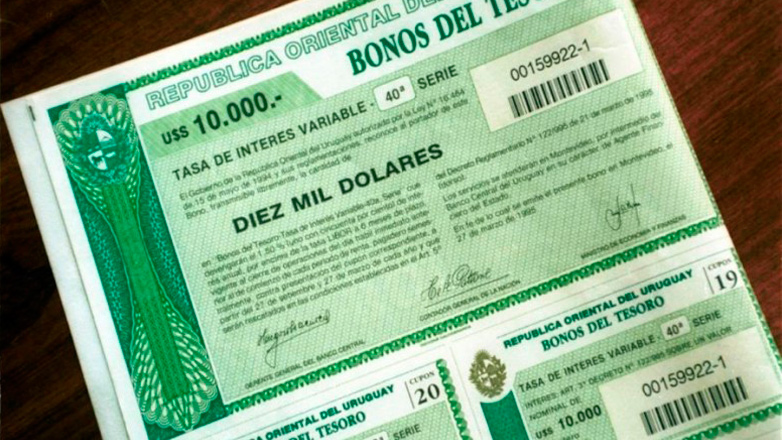The response to the opening of the 2050 bond doubled the amount offered and paid a rate lower than the previous tranche. According to analysts this is a “financial score”.
The confidence of global investors in Uruguayan debt was confirmed late February when the Ministry of Economy opened the 2050 global bond in US dollars and made USD 1,000 million available. It received a demand for over USD 2,100 million and ended up awarding USD 1,200 million, with an annual interest rate of 5.014%.
“It’s a score”, “a success”, were some of the expressions used by the financial analysts when referring to the new issue due to its extension and the “low cost” of the amount obtained.
The rate at which the tender was cut-off is even lower than that of the first tranche of the bond in June 2014 for USD 2,000 million (5.121%). “The term of this operation allows Uruguay to efficiently capture the performance benefits that the sovereign curve has experienced in recent months. Said performance was the result of a considerable reduction in the yield of US securities operating as reference, thus compensating the increased spread that both Uruguay and other emerging economies have faced in recent months”, stressed the Ministry of Economy in a press release.
Thereby, the 2050 bond now reached USD 3,200 million of circulating capital and extended the average maturity of the Uruguayan debt to about 15 years; “one of the longest in the world”, highlighted MEF (Ministry of Economy and Finance) authorities.
“The larger size (of the 2050 bond) shall contribute to increased efficiency of transactions in the secondary market, and thus reduce the liquidity premium required by investors when buying debt securities”, explained the MEF.
The government based the issuance on the need to maintain at all times sufficient levels of cash to cover the debt service for at least the next 12 months, take advantage of the interest rate context still low in US dollars and extend the duration of the portfolio debt of the central government, the statement said. Of total issuance, 46% was awarded to US investors, 40% to European, 7% to Uruguayan and the remainder to investors from other countries in Latin America. The operation was led by Bank of America, Merrill Lynch, Morgan Stanley and Santander in New York.
Time and cash
With the new award the government is obtaining money at a “low cost” and “extending” the maturity of the debt, highlighted Andrés Escardó, the financial analyst.
His colleague Mariano Sardáns, CEO of FDI, explained that the performance of the Uruguayan debt “is excellent”, because it is stretching the average maturity term, a variable which is highly regarded in terms of credit ratings. He stressed that it is particularly important to do this now because a rate situation like today’s will be difficult to find again in the near future.
Escardó also noted that the issuance shows that Uruguay offers agents security so as to remain protected in a situation of uncertainty, as is today, caused by volatile scenarios in Russia, Ukraine and Greece and even problems such as those in which the Brazilian company Petrobras has been involved.
Santander bank’s finance director, Diego Labat, stressed the government’s success in this global issuance. “We are very satisfied with having participated in such a successful operation for Uruguay”, he remarked. According to the last report submitted by the Debt Management Unit of the MEF, at the end of 2014 the Uruguayan net debt represented 21.6% of the GDP, which is 48 percentage points less than 10 years ago.
Whereas in 2004 the average debt maturity was 7.4 years, at the end of 2014 it was 14.4 years. Now the MEF reported that the maturity term was extended to 15 years.
The government must pay USD 2,400 million in interest and amortization in 2015, USD 1,450 of which were planned to be met with new issuances. Yesterday’s operation covered 83% of the stated objective.
Source: El País





